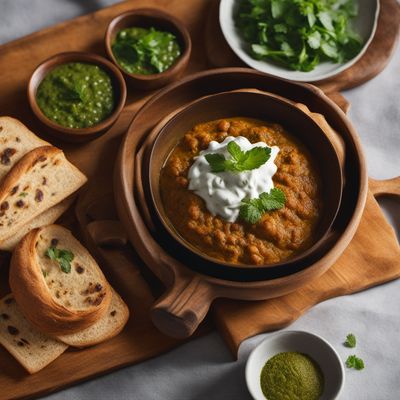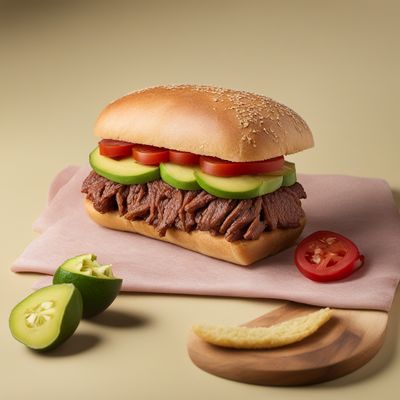
Ingredient
Wheat bread and rolls
The Wholesome Delight: Exploring the World of Wheat Bread and Rolls
Wheat bread and rolls are made from flour derived from the wheat grain, which gives them a distinct flavor, texture, and appearance. They are typically soft, slightly chewy, and have a golden-brown crust. The crumb of wheat bread is often denser compared to white bread, with a nutty and slightly sweet taste. Wheat rolls, on the other hand, are smaller in size and can have a softer texture. These bread and rolls are a popular choice due to their wholesome nature and ability to complement a wide range of dishes.
Origins and history
Wheat has been cultivated for thousands of years and is believed to have originated in the Fertile Crescent of the Middle East. It played a significant role in the development of ancient civilizations, such as Mesopotamia and Egypt. Wheat bread has been a dietary staple in many cultures throughout history, symbolizing sustenance and nourishment. Over time, different regions have developed their own variations of wheat bread and rolls, incorporating local ingredients and techniques.
Nutritional information
Wheat bread and rolls are a good source of complex carbohydrates, dietary fiber, and essential minerals such as iron and magnesium. They provide sustained energy and contribute to a healthy digestive system.
Allergens
Wheat bread and rolls contain gluten, making them unsuitable for individuals with gluten intolerance or celiac disease.
How to select
When selecting wheat bread and rolls, look for products made with whole wheat flour or whole grains to ensure higher nutritional value. Check the ingredient list to ensure minimal additives or preservatives. Freshly baked bread from local bakeries or artisanal shops is often a good choice for superior quality.
Storage recommendations
To maintain the freshness and quality of wheat bread and rolls, store them in a cool, dry place in a breathable bag or container. Alternatively, they can be stored in the refrigerator for a longer shelf life. Avoid storing them in plastic bags, as this can make the crust soggy.
How to produce
Amateur bakers can produce wheat bread and rolls by following a simple recipe that involves combining whole wheat flour, yeast, water, salt, and sometimes a sweetener or fat. The dough is then kneaded, allowed to rise, shaped into loaves or rolls, and baked until golden brown.
Preparation tips
Wheat bread and rolls can be enjoyed in various ways. They can be sliced and toasted for sandwiches or used as a base for bruschetta or crostini. They can also be used to make breadcrumbs, croutons, or bread pudding. For a delightful twist, try adding herbs, seeds, or dried fruits to the dough before baking.
Substitutions
Whole grain bread or rolls can be used as a substitute for wheat bread and rolls. Alternatively, gluten-free bread or rolls made from alternative flours like rice, corn, or quinoa can be used for individuals with gluten intolerance.
Culinary uses
Wheat bread and rolls are commonly used for sandwiches, burgers, and toast. They are also a popular choice for making French toast, bread pudding, or stuffing. In some cuisines, they are used as a base for bruschetta or as a side to accompany soups and stews.
Availability
Wheat bread and rolls are commonly available in grocery stores, supermarkets, and bakeries worldwide.
More ingredients from this category
Recipes using Wheat bread and rolls » Browse all

East Indian Spiced Montadito
Tandoori-inspired Montadito: A Fusion of Spanish and East Indian Flavors

Bocadillo de Carne de Caballo con Chimichurri
Savory Horse Meat Sandwich with Tangy Chimichurri Sauce

Mexican Mollete with Refried Beans and Cheese
Cheesy Mexican Mollete Delight

Cheese and Bacon Roll with a Guinean Twist
Savory Delight: Guinean-Inspired Cheese and Bacon Roll

Cuban-inspired Steak Sandwich
Caribbean Delight: Cuban-inspired Steak Sandwich

Putian-style Toast with Shrimp Paste
Savory Shrimp Toast: A Putian Delight

Egg Banjo
Crispy Egg Sandwich Delight

Spanisch Brötli with a Twist
Savory Swiss Delight: Spanisch Brötli Reinvented

Beijing-style Roast Pork Sandwich
The Perfect Fusion: Beijing-style Roast Pork Sandwich

Spanish Mollete with Tomato and Jamón
Savory Spanish Delight: Mollete with Tomato and Jamón

Ghanaian-inspired Trześniewski Brötchen
Savory Ghanaian Delight: Trześniewski Brötchen with a Twist

Peruvian-inspired Beef Sandwich
Andean Delight: A Flavorful Peruvian Beef Sandwich


